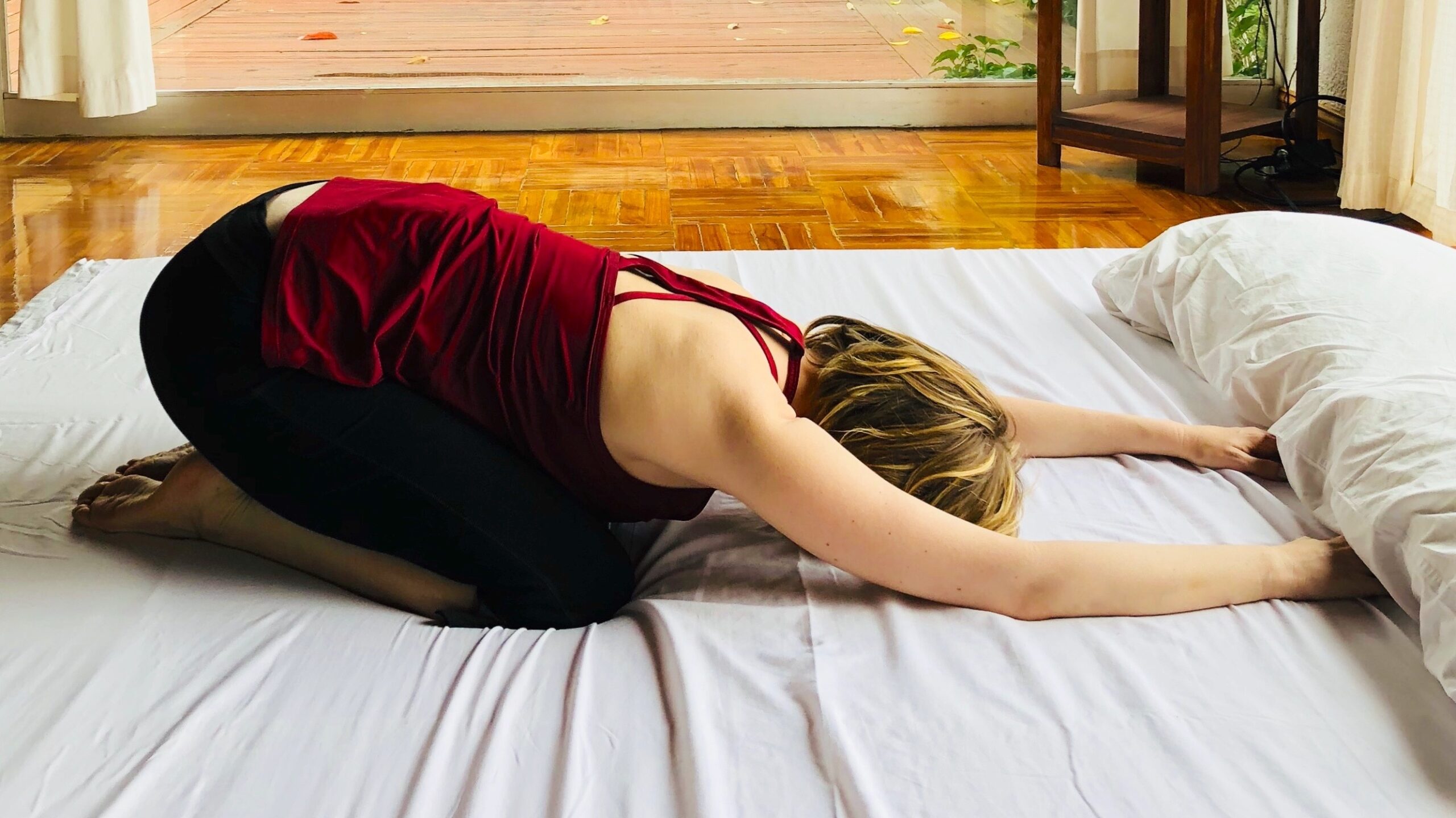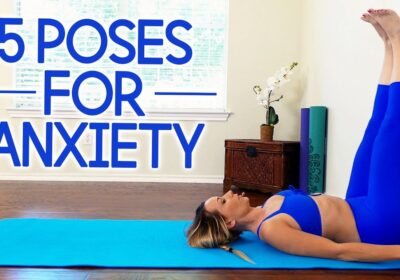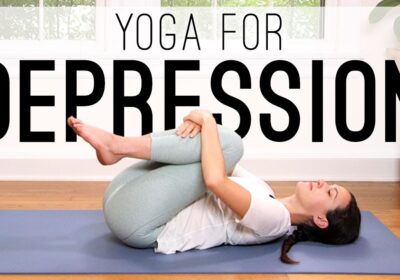Soothing Yoga for a Restful Night’s Sleep

Summary:
- Yoga can be an add-on to the sleep hygiene concept for improvement in quantity as well as quality of sleep. It is also useful for sleep apnea and restless legs syndrome.
- Yoga practices which are useful for patients with insomnia are breath awareness, pranayama, relaxation practices, gentle yoga postures, meditation and chanting.
- Advanced yoga practices, holding postures for long duration, stimulating practices and practicing close to bedtime can be counterproductive and are to be avoided.
Yoga therapy can be an effective approach for improving sleep quality and promoting healthy sleep patterns. Insomnia and other sleep disturbances can have a profound impact on an individual’s physical and mental health, leading to fatigue, irritability, decreased productivity, and an increased risk of developing chronic conditions such as heart disease and diabetes.
Sleep hygiene is an established concept which helps in dealing with sleep related difficulties. It includes – establishing a regular sleep-wake cycle, creating a sleep-conducive environment, avoiding stimulating activities before bedtime, practicing relaxation techniques, regular physical activity and intake of milk at bedtime. Similar concepts are highlighted in yoga as well. Yoga is known for its exercise component in the form of asana practices. Besides, its relaxation techniques like yoga nidra have already made it into mainstream science. So there is enough logic to move ahead for yoga practices for dealing with the problem of sleep disturbance.
Yoga therapy for sleep typically involves a combination of gentle postures, breathing exercises, and meditation techniques that promote relaxation and reduce stress. These practices help to calm the mind and body, reduce tension and anxiety, and promote feelings of tranquility and inner peace. Research studies have shown that regular practice of yoga can lead to significant improvements in sleep quality and duration, as well as a reduction in symptoms associated with sleep disorders such as insomnia, sleep apnea, and restless leg syndrome.
If you are struggling with sleep issues and looking for a natural and effective way to improve your sleep quality, consider incorporating yoga into your daily routine. Here are some yoga practices that you can try:
Pranayama: Deep breathing exercises such as Nadi Shodhana (Alternate Nostril Breathing), abdominal breathing, full yogic breath and Bhramari (Bee Breath) can be helpful in calming the mind and reducing stress levels.
Breath Awareness: Focusing on the breath can be an effective way to calm the mind and promote relaxation. It is also considered as a form of meditation or mindfulness practice.
Relaxation techniques: Practices such as Yoga Nidra (yogic sleep), progressive muscle relaxation, and guided imagery can be helpful in inducing a state of deep relaxation, which can help in improving sleep quality.
Gentle yoga postures: Gentle yoga postures, such as forward folds, seated twists, and restorative poses, can be helpful in reducing tension and calming the mind.
Meditation: Meditation practices, such as mindfulness meditation, can be helpful in reducing anxiety and promoting relaxation.
Chants: The rhythmic and repetitive nature of chanting can be calming and relaxing, helping to quiet the mind and induce sleep. Chanting can also reduce stress and anxiety, which can contribute to sleep disturbances. Chanting can be incorporated into a bedtime routine as a way to wind down and prepare for sleep.
Yogic counseling: Yoga counseling can alleviate mental stress and calm down the mind which can be an aid to sleep hygiene. Understanding the concept of four states of consciousness (Jagrut, swapna, susupti and turiya) can be relevant along with other parts of yogic counseling.
While yoga is known to help improve sleep quality, some yoga practices or postures may actually interfere with sleep for some people. Here are some examples:
Energizing and stimulating practices: Practices such as dynamic flow, power yoga, or inversions can be too stimulating for some people, especially if practiced in the evening or close to bedtime.
Advanced yoga practices: Advanced yoga practices (asana, pranayama and meditation) may result in stress for patients and are not ideal for patients with sleep disturbance.
Overstimulation: Practicing yoga in a bright room with lots of stimulation or using electronic devices before bedtime can interfere with the production of melatonin and make it harder to fall asleep. Some practices falling in this category are kapalabhati, bhastrika, mukha dhouti etc.
Holding postures for too long: Holding postures for extended periods of time can raise the heart rate and cause the body to heat up, making it harder to fall asleep.
Practicing close to bedtime: Practicing yoga too close to bedtime can raise energy levels and make it harder to wind down and fall asleep.
It’s important to remember that everyone’s body and sleep needs are different, and what may cause insomnia for one person may not affect another. It’s always a good idea to pay attention to how your body responds to different yoga practices and adjust accordingly.
While yoga has been found to be beneficial for sleep in many cases, there are certain clinical scenarios where it may not be effective in treating sleep disturbances. Some examples include:
Sleep apnea: Sleep apnea is a condition where breathing stops and starts repeatedly during sleep. There are three forms of sleep apnea: Obstructive sleep apnea (OSA), Central sleep apnea (CSA) and Mixed sleep apnea (Components of OSA and CSA). Yoga may be an effective add-on intervention in dealing with OSA and mixed sleep apnea but not for CSA. In treating these conditions, apart from medical and yoga intervention use of a continuous positive airway pressure (CPAP) machine may be required.
Chronic pain: Chronic pain can make it difficult to fall asleep or stay asleep, and yoga may not provide sufficient relief. In such cases, a combination of medical treatment and behavioral therapy may be necessary.
Restless leg syndrome: Restless leg syndrome (RLS) is a disorder that causes an uncontrollable urge to move the legs, which can disrupt sleep. While some yoga practices may provide relief for mild RLS, more severe cases may require medical treatment.
Severe mental health conditions: Certain mental health conditions such as severe depression or anxiety may require medical intervention and psychotherapy in addition to yoga therapy.
It is important to note that yoga therapy should not be used as a substitute for medical treatment for any of these conditions. Rather, it can be used as an adjunct therapy to improve overall sleep hygiene and relaxation. It is always recommended to consult with a healthcare provider before starting any new therapy or exercise program.
Related Posts

Yoga for Anxiety Disorders
Summary: Yoga can be used as both an add-on treatment and as a monotherapy for…

Yoga for Back pain
Summary: Yoga can be used as both an add-on treatment and as a monotherapy for…

Yoga for Depression
Summary: Yoga can be used as both an add-on treatment and as a monotherapy for…

Leave a Reply